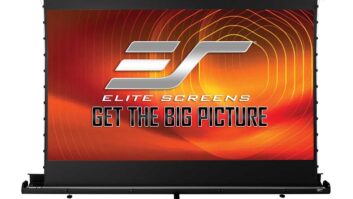Looking at significant growth in video projectors based on next-generation fixed-pixel micro devices, Sony unveiled at a U.S. press conference here its Silicon Crystal Reflective (SXRD) technology.
“The Holy Grail of high definition is realized by achieving the highest pixel density in the smallest image area possible,” said Tim Alessi, Sony Television/ Digital Media Marketing Division director. “SXRD accomplishes this while providing the brightest picture and the highest contrast levels as well. All this from a device that is highly reliable and relatively simple to manufacture.”
The manufacturing process is said to be more efficient and capable of higher yields than traditional LCoS technology, “making it flexible enough to implement in a variety of ways,” the company said.
Sony executives said they hope to see the first SXRD television products reach the market by the end of the year, and both front- and rear-projection applications are possible.
The primary benefit of SXRD technology vs. competitive systems such as DLP and LCoS is its ability to produce full HDTV resolution without meshing or many other artifacts common in fixed-pixel devices.
Unlike Sony’s current transmissive LCD-based Grand Wega projectors, the three-chip SXRD’s reflective nature makes it similar in one respect to LCoS based displays.
The SXRD micro display produces over 2 million pixels (1,920 by 1,080 pixels) of picture data from a .78-inch (diagonal) panel with a pixel pitch of 9 micrometers each. Spacing between each pixel is said to be .35 micrometers. Fill factor is said to be almost 92 percent.
Pixel density is increased almost 2.5 times over current micro display technology, with a 10-fold improvement in pixel spacing compared with typical LCD or single-panel DLP products.
Cell gap size is less than 2 micrometers, “far smaller than conventional high-temperature polysilicon LCD or LCoS devices from other manufacturers,” Sony said. This yields a response time of less than 5 milliseconds and a total reflectivity of less than 65 percent.
Black level performance is also said to be high, with a device contrast ratio of 3,000:1. Brightness in the prototype front projector was said to be 1,000 ANSI lumens. Final products may be higher, Sony said.
Sony will handle the entire silicon wafering and paneling process in house at its semiconductor facilities in Kumamoto, Japan. Before authorizing the in-house fabrication process, Sony required three key innovations:
- A new type of display technology with high contrast and fast response characteristics.
- A redesigned silicon driving circuit combined with a new silicon wafering technique to outperform existing H-LCD and DLP technology.
- A more efficient liquid crystal cell assembly.
Tim Baxter, Sony Visual Network Products Division senior VP, said “it is essential that Sony sets the right expectations for any new display technology in any given market.”
He offered market research showing that by the year 2005, CRT-based displays will continue to dominate the industry with unit sales still 85 percent of the total. However, by the end of this same period, non-CRT display products will come to represent almost 40 percent of all sales in dollars generated.
“This is due to the fact that nearly 70 percent of all televisions sold in 2005 will be either fully digital or digital-ready models that deliver the highest performance possible.”
Baxter said Sony is addressing the trends with a new marketing strategy designed to deliver display solutions to customers in every lifestyle segment.
“Sony has a variety of display solutions utilizing many different technologies to meet all consumers’ needs,” Baxter said. The strategy is paying off, he added, pointing to NPD market research showing Sony holding the No. 1 “digital dollar share” position in direct view, rear projection and plasma displays.
The new SXRD technology is part of Sony’s technology road map for the future — encompassing that class of consumer that “demands the very best,” Baxter said.
Alessi said “the real growth in high-end television is taking place in micro devices.”
The SXRD system is said to be more efficient to manufacturer than its primary rivals — LCD, DLP and LCoS, while image quality is said to be more “film-like” than many other fixed-pixel projectors.
In the past, Sony has shown another next-generation display technology it is developing called — grating light value (GLV) laser projection.
Sony executives said GLV is probably still a few years from becoming a marketable product, and the company may decide to first use that system for commercial movie theater projection systems.
In comparison, the SXRD technology will be ready for market in a few months.
Alessi said the company is still determining how it will position the SXRD products, adding that he expects it will be used as a step-up display to current LCD projection models.













